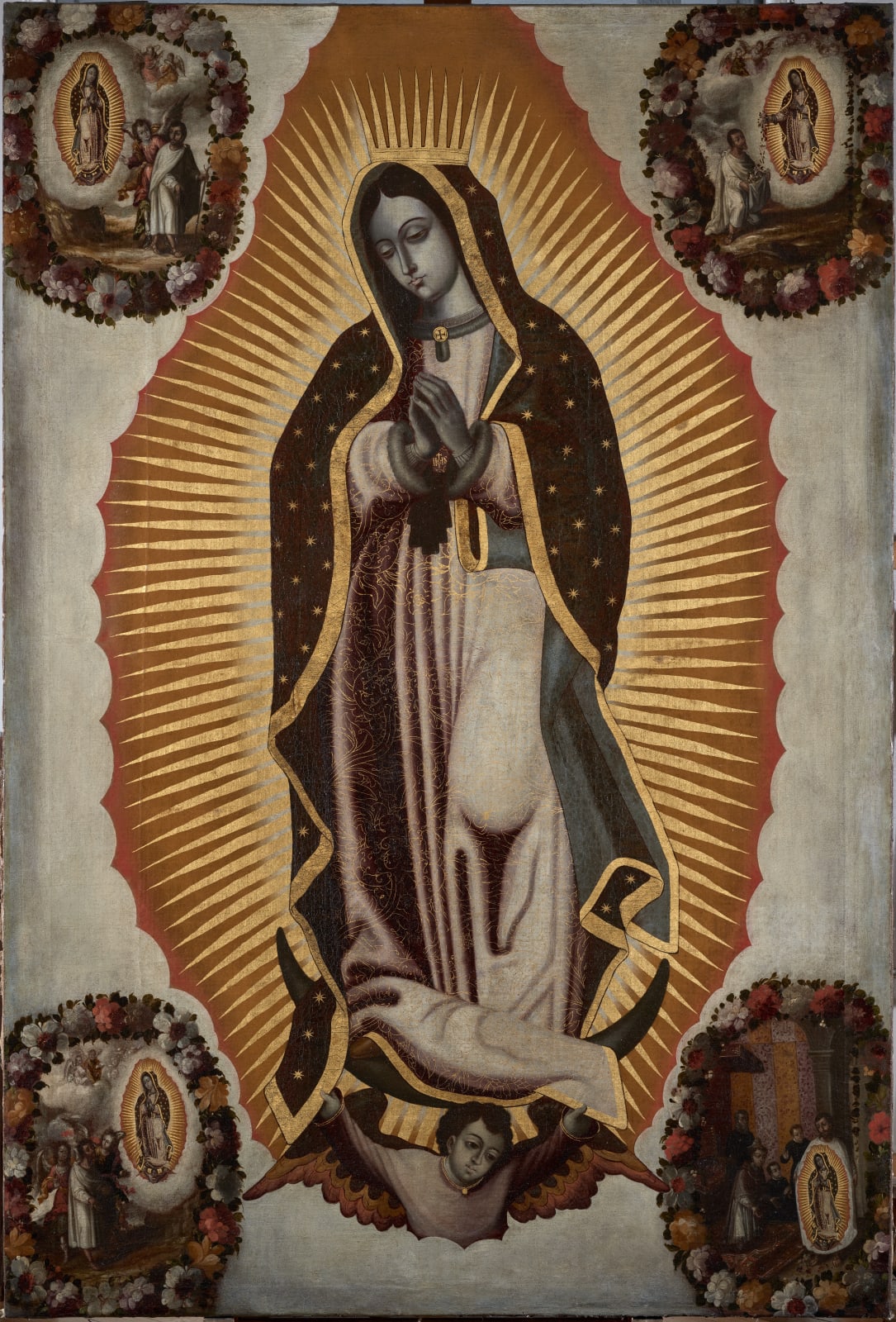OUR LADY OF GUADALUPE
Provenance
Private collection, Spain
This anonymous work of exquisite fattura and complex composition belongs specifically to the 18th-century New Spanish Baroque repertory of religious imagery depicting Our Lady of Guadalupe.
The previously unpublished canvas we are presenting here portrays the miraculous episode narrated in the Nican Mopohuatext, where the the Virgin appears to the indigenous Juan Diego on the hill of Tepeyac. This legend datings back to 1531 goes on to tell how Our Lady asked Diego to request Friar Bishop Juan de Zumárraga build a temple in her name, leaving an impression of her image on the former's cloak, or "tilma", as physical proof and justification.
Although this has been the most frequently represented and venerated episode from the Marian canon in the visual arts of New Spain since Baltasar de Echave Orio first painted it in 1606, the way in which it has translated artistically has undergone superficial, but not fundamental, alterations, as beyond the ornamental elements surrounding the scene, the image of the Mother of God has, over the centuries, remained true to the image preserved on the "tilma".
